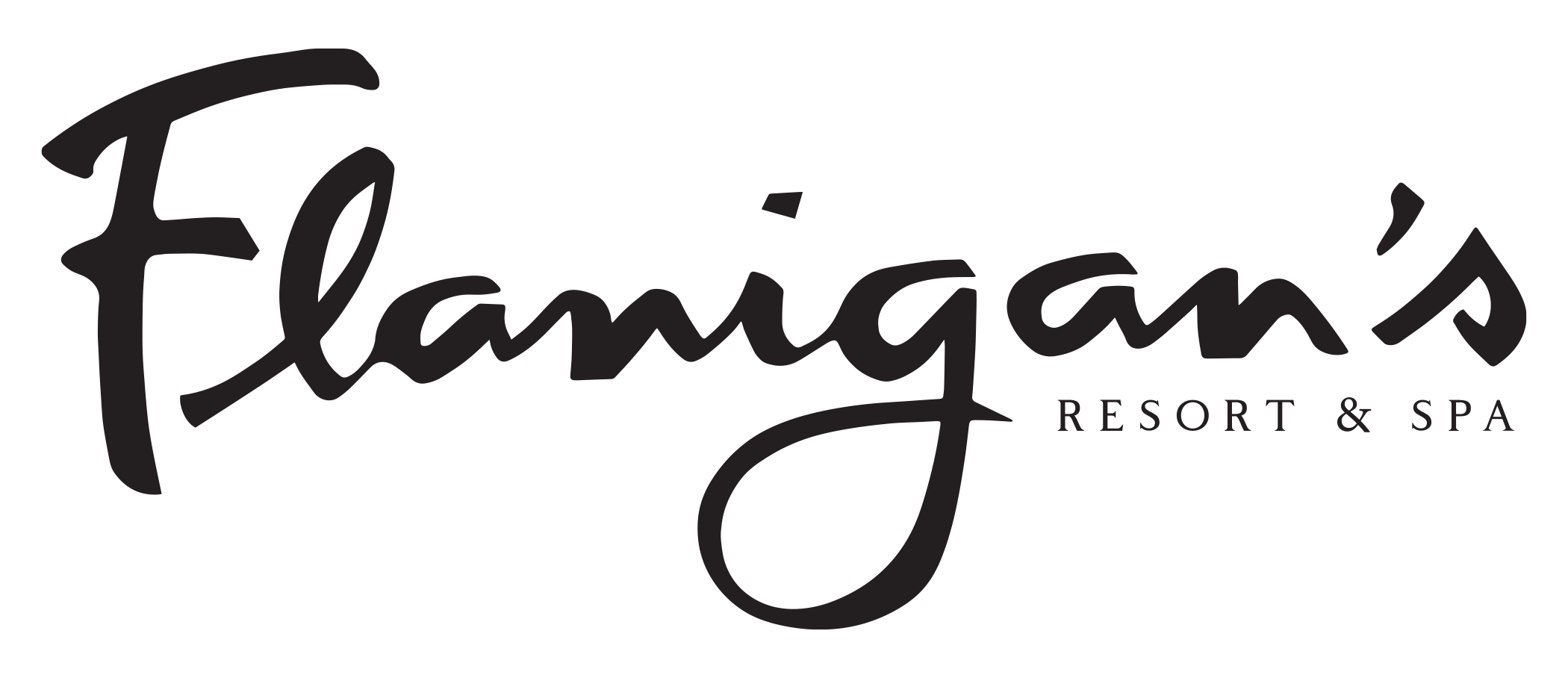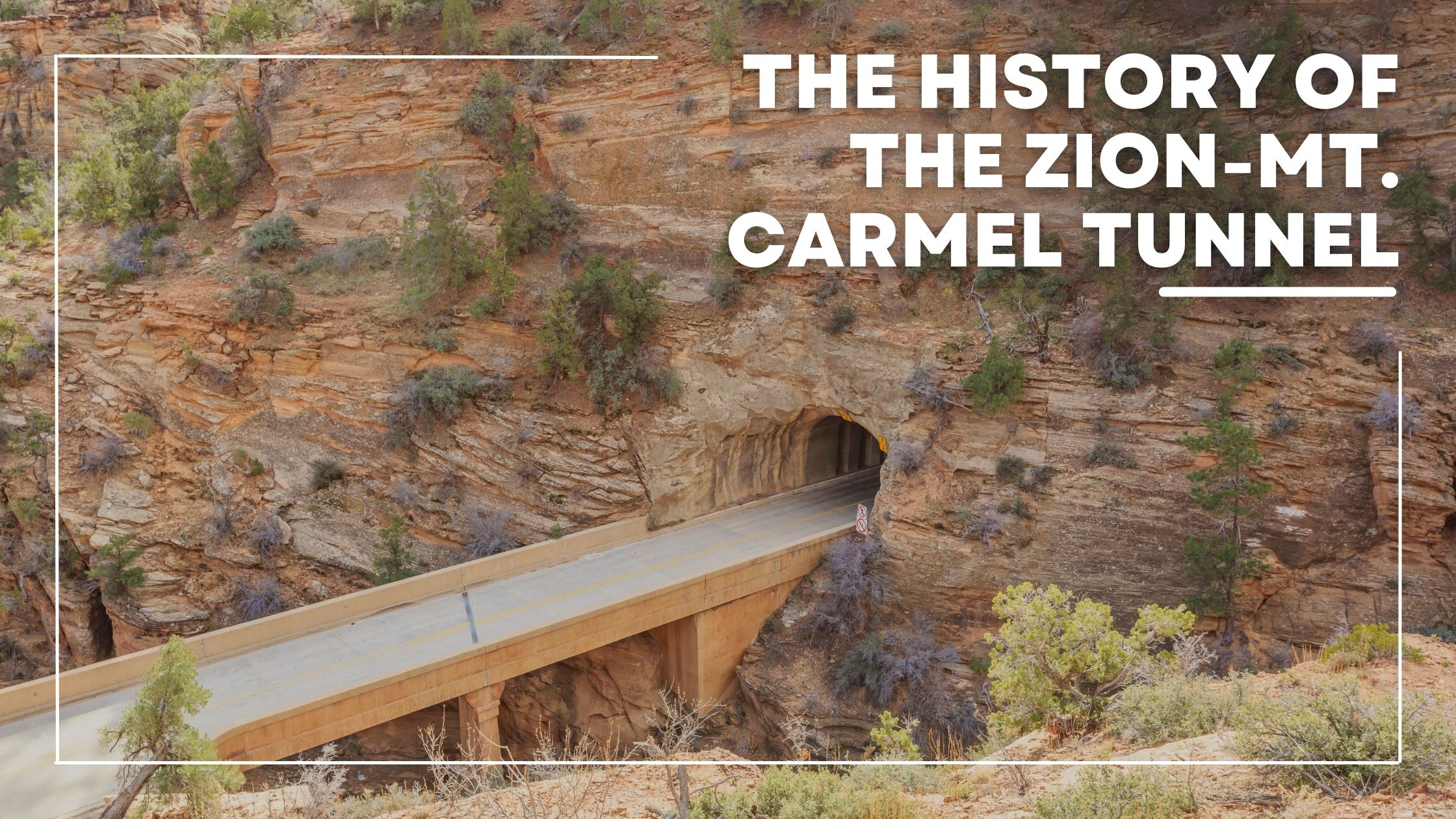When most people talk about visiting Zion National Park, they mention seeing popular landmarks like the historic Zion Lodge, the peak of Angels Landing, or the start of The Narrows. But there’s one landmark in the park that has perhaps the most interesting and unique history. Without this landmark, visiting the park would be very different today.
The Zion–Mt. Carmel Tunnel is an attraction all its own and one of the most remarkable features of Zion National Park. This 1.1-mile engineering marvel, completed in the early 1930s, was carved through solid Navajo sandstone with windows that provide both light and airflow. It serves as the vital connection between the Lower and Upper sections of Zion Canyon, making travel through the park faster and more accessible.
Thanks to this tunnel and the Mt. Carmel Highway, visitors can quickly travel from Flanigan’s Resort and other nearby lodging into the Upper Canyon, while also enjoying easy access to Bryce Canyon National Park for a convenient day trip. Without this route, the journey between the Upper and Lower Canyons would be far longer and more difficult.
If you’re planning to drive during your stay near Zion, don’t miss the chance to experience Zion–Mt. Carmel Tunnel firsthand. Keep reading to learn more about the fascinating history behind this iconic roadway and tunnel.
Early Development in Zion National Park
Zion National Park received its first protection in 1909 when President William Howard Taft designated the park Mukuntuweap National Monument. At the time, the canyon was so remote that it saw few annual visitors. There was little in the way of infrastructure within the park. Visitors who did make their way to Southern Utah faced rugged dirt roads that were prone to washouts and few marked trails.
In 1916, the National Park Service was formed. The NPS’s first director, Stephen T. Mather, set out to improve visitor access to the growing number of national parks. He promoted road construction projects to help make parks more accessible, thereby encouraging more visitors to come. After roads were constructed and visitor numbers increased, the NPS would then begin building visitor facilities and lodges.
The same year that the NPS was established, then-senator of Utah Reed Smoot acquired federal appropriations to build a series of roads through Mukuntuweap National Monument. Two entrepreneurs by the name of W.W. Wylie and Gronway Parry began a project of their own to bring concessionaire services to the park. They joined forces to form the National Park Transportation and Camping Company. The company ran tent camps in the new park, with visitors traveling by railroad to Lund, Utah, then transferring to the park. Tours were 10-days long and included a loop through Mukuntuweap, Bryce Canyon, the Kaibab Plateau, and the North Rim of the Grand Canyon.
Zion Tunnel Access for Oversized Vehicles
As traffic through the Zion-Mount Carmel Tunnel increased, so did the number of oversized vehicles—think RVs, trailers, and tour buses.
By 1989, it became clear these larger vehicles couldn’t safely navigate the tunnel’s curves without crossing the center line, leading to a growing number of accidents and close calls.
To improve safety, the National Park Service stepped in. Since spring 1989, rangers have managed tunnel traffic for oversized vehicles by turning it into a one-way route during crossings. This controlled system ensures a safe, smooth passage for larger rigs.
If you’re driving an oversized vehicle, you’ll need a $15 tunnel permit. In 2019 alone, rangers safely guided over 32,800 oversized vehicles through the tunnel.
Ranger-Assisted Hours for Oversized Vehicles:
🕗 8:00 a.m. to 4:30 p.m.
Make sure you only drive through during these hours—rangers must be present to manage traffic. Standard passenger vehicles can use the tunnel anytime, day or night.
A History of the Zion-Mount Carmel Tunnel
Over the next few years, the popularity of Mukuntuweap grew. In 1918, the monument was enlarged by more than 60,000 acres, and the name was changed to Zion National Monument. Just a year later, it became Zion National Park.
With the creation of the national park, the NPS formed an alliance with the Utah and Union Pacific Railroad to create a “Grand Loop.” Similar to the original 10-day camping loop, this new trek offered a tour through the park and other nearby destinations.
The earlier loop had been time-consuming and often faced travel delays. As a part of the new loop, the NPS, the state of Utah, and the Bureau of Land Management decided to build the Zion-Mount Carmel Highway and Tunnel. This highway and tunnel would shorten the journey through Zion and to other parks in the region. The 25-mile road would wind up Pine Creek Canyon, and cut directly through the Navajo sandstone cliffs.
The project was an incredible undertaking for the time. It took three years and some incredible logistical, engineering, and design talent to complete. When completed, the tunnel stretched 1.1 miles through solid rock. Four different crews worked on opposite ends of the tunnel, meeting in the middle. Another company began carving the seven switchbacks that climb to the entrance of the tunnel.
Windows were cut in the tunnel to not only provide ventilation and light but were also spots where crews could deposit the rock they were cutting away. A combination of blasting and drilling was used to widen the tunnel. Accidents, collapses, and rock slides did occur during the construction. But after two years and ten months, the tunnel officially opened to the public on July 3, 1930.
Visiting the Tunnel From the Best Places to Stay in Zion
Unless you plan to only utilize the Zion Canyon Shuttle to explore the Lower Canyon, you’ll no doubt have a chance to experience the Zion-Mt. Carmel Tunnel during your visit to the best places to stay in Zion. The tunnel is just a short drive away from Flanigan’s Resort. Even if you’re only here for a short trip, make sure to plan for time to drive through this iconic landmark, and take a cruise through the beautiful Upper Canyon.
Ready to start planning your stay in lodging near Zion? Now is a great time to book a visit! Winter is often referred to as Zion’s Secret Season—and for good reason! This time of year brings cooler temperatures and fewer crowds to the park. If you’re lucky enough to visit after snow, you’ll even be treated to the sight of the park as it turns into a sparkling winter wonderland. Book a visit today to experience this unique season for yourself!
FAQs
Q1. When was the Zion–Mt. Carmel Tunnel completed?
It opened on July 3, 1930, after nearly three years of construction.
Q2. How long is the tunnel and what makes it unique?
The tunnel is 1.1 miles long with windows cut into the rock for light and ventilation.
Q3. What are the rules for oversized vehicles?
Oversized vehicles need a $15 permit and must pass with ranger escort between 8:00 a.m. and 4:30 p.m.
Q4. Why was the Zion–Mt. Carmel Highway and Tunnel built?
It was built to shorten travel through Zion National Park and improve access to nearby parks.


